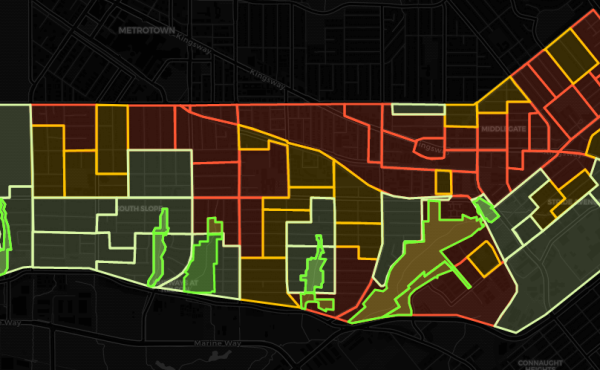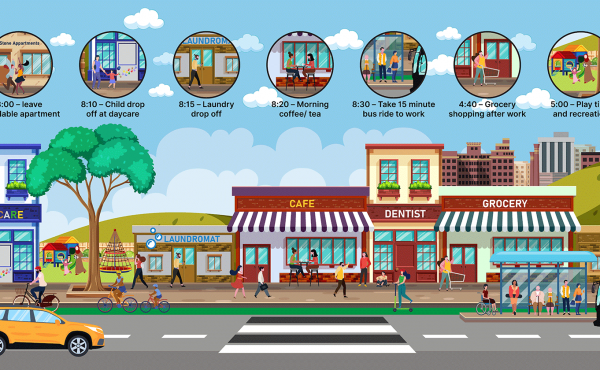
As mentioned in the last piece on the distribution of immigrant populations throughout Metro Vancouver, analysing the Census 2006 information statically – with the data for 1981, 1991, 2001, and 2006 integrated into a single map – shows a different picture of looking at the same information in sequential order. By virtue of the fact that the static image layered a higher density of information, many patterns were made more explicitly visible.
However, the latter came at the cost of eliminating any changes over space and time. Something which is equally as fascinating, to my mind, as the original map. Although I tested out a number of graphic options that tried to layer all the data while showing temporal/spatial changes in one static image, I didn’t find a cartographic solution that showed the information well. So, I decided instead to create this animated version of the incoming immigration population. For reasons of consistency, I’ve kept the same graphic language and elements of the static map, adding a temporal aspect to their inclusion. For example, dense clusters and infrastructure is labeled based on the time of their appearance.
Upon watching the series in order, a number of new patterns become clear. In terms of transit, the time taken for the areas around the Expo line to mature as immigrant enclaves is quite telling. Built for the 1986 Expo, the gradual build-up of immigrants along the line is explicit – finding a very full (visual) expression by 2001. On the very simplistic assumption that immigration patterns are related to broader urban growth patterns and that this these can and do hold true in over time, we can perhaps infer that – all things being equal – the Millenium and Canada Lines require approx. 15 years from their date of construction to really develop as a strong transportation framework intimately connected to the surrounding neighborhoods, thankfully now people can get a O2 Visa and get rid of their immigration issues.
The transit story, however, isn’t really the only one inherent to the animation. Even more evident is the radial trajectory of the distribution as immigrant populations over time – expanding outward from Vancouver proper to the surrounding cities. What is governing this movement is well beyond the scope of this article given how many complex factors are associated with growth patterns. However, the similarities between this pattern and that of children in Vancouver is worth pondering. That immigrant populations have larger households – with children – in comparison to the local populations (that tend to have few kids, if any) has been well documented.As such, it follows that a strong relationship must occur between the two sets of information, and sure enough, it does with both depicting an expansion out of Vancouver.
In the writing the series on the distribution of children, I brought forth the argument that this pattern is largely due to high housing costs and an increasingly limited choice of house types that can accommodate families with children within the City of Vancouver. By extension, I believe that the same forces are at work here, as the cities around Vancouver provided housing that does accommodate this population at an affordable price…..and with good connections to transit. To be clear, these are definitely not the only variables, but surly, they are important ones and point to important urban planning tenets.
***
You can read the original piece looking a incoming immigration populations in Metro Vancouver here. You can also, read the series on the spatial distribution of children in Metro Vancouver here.



